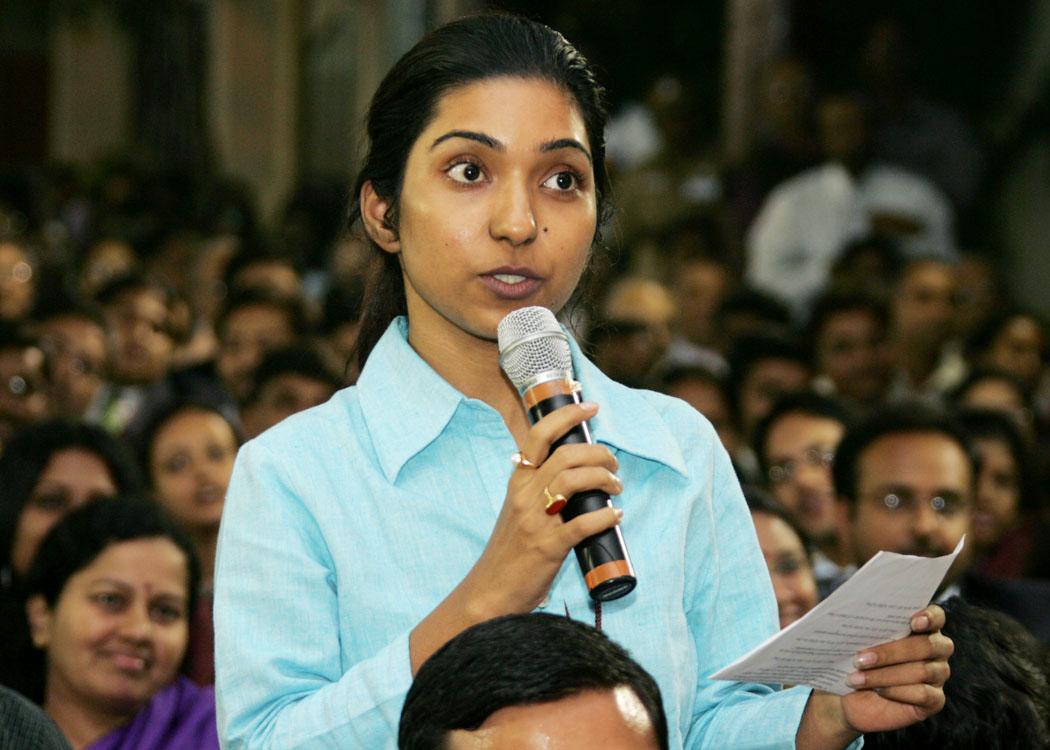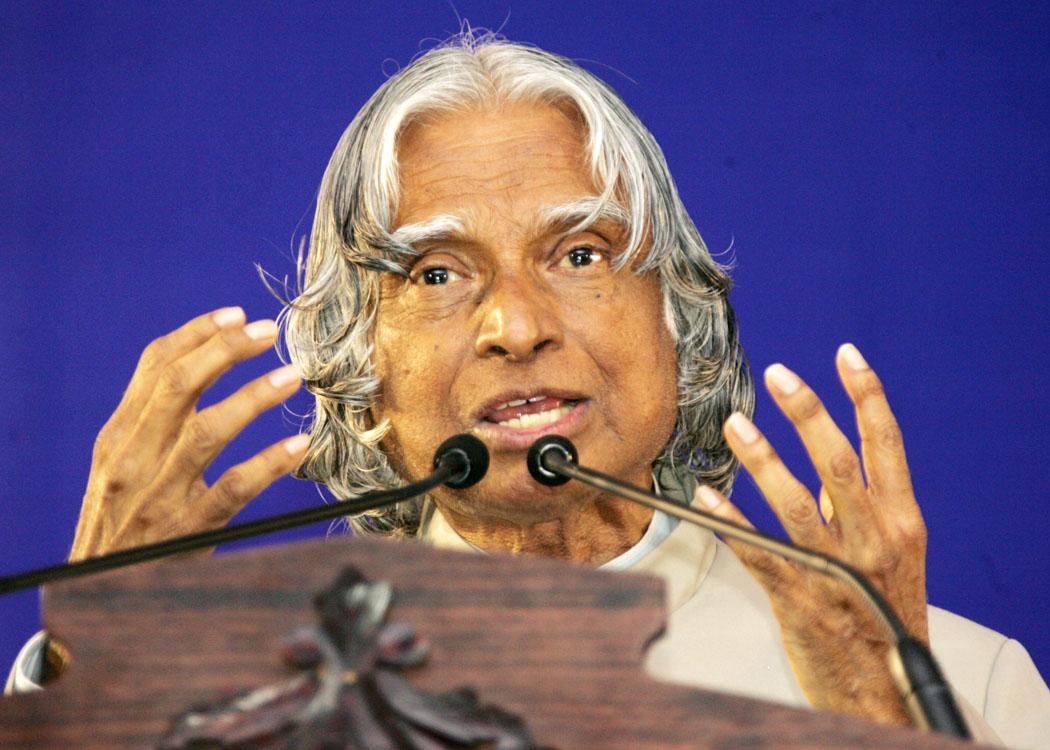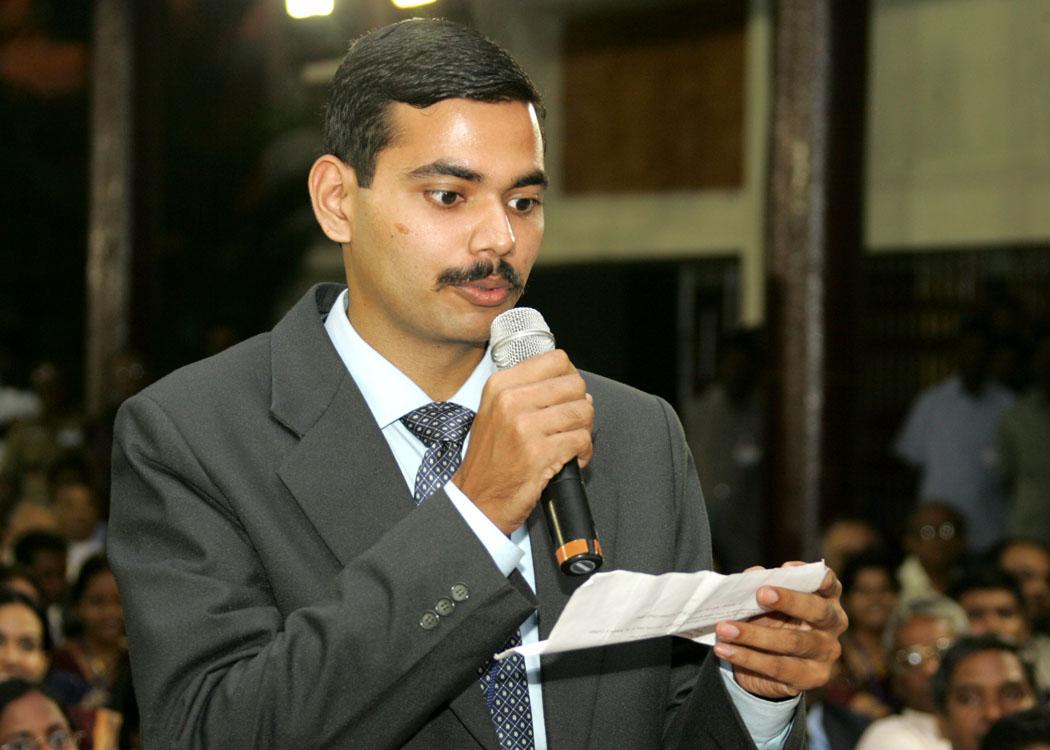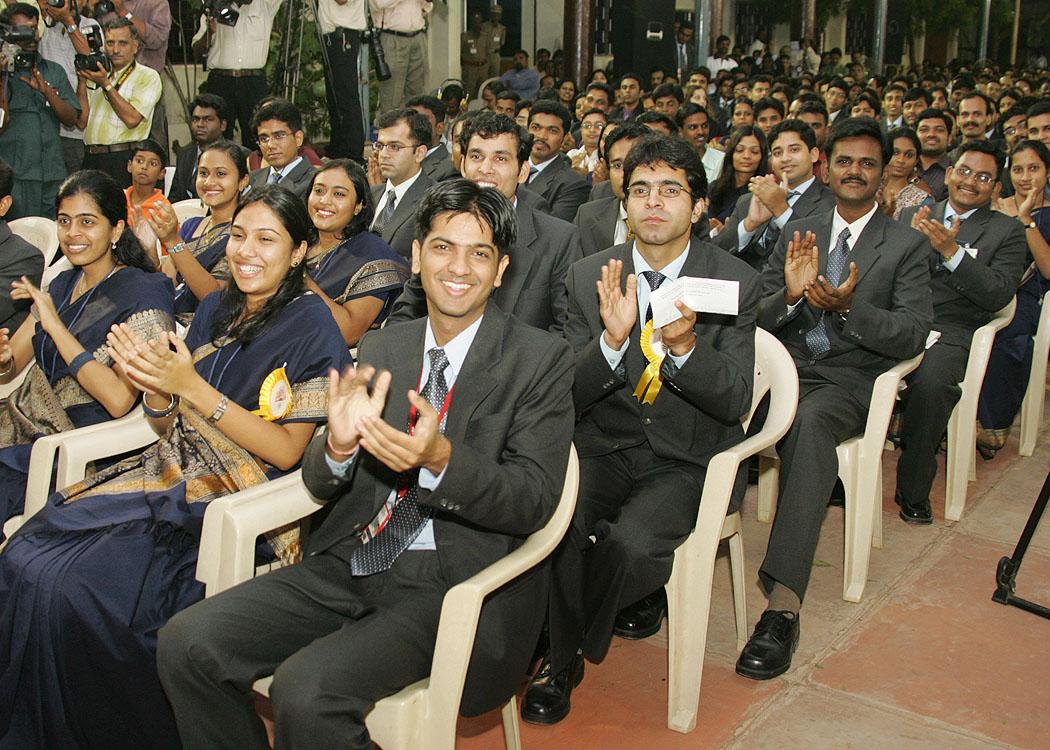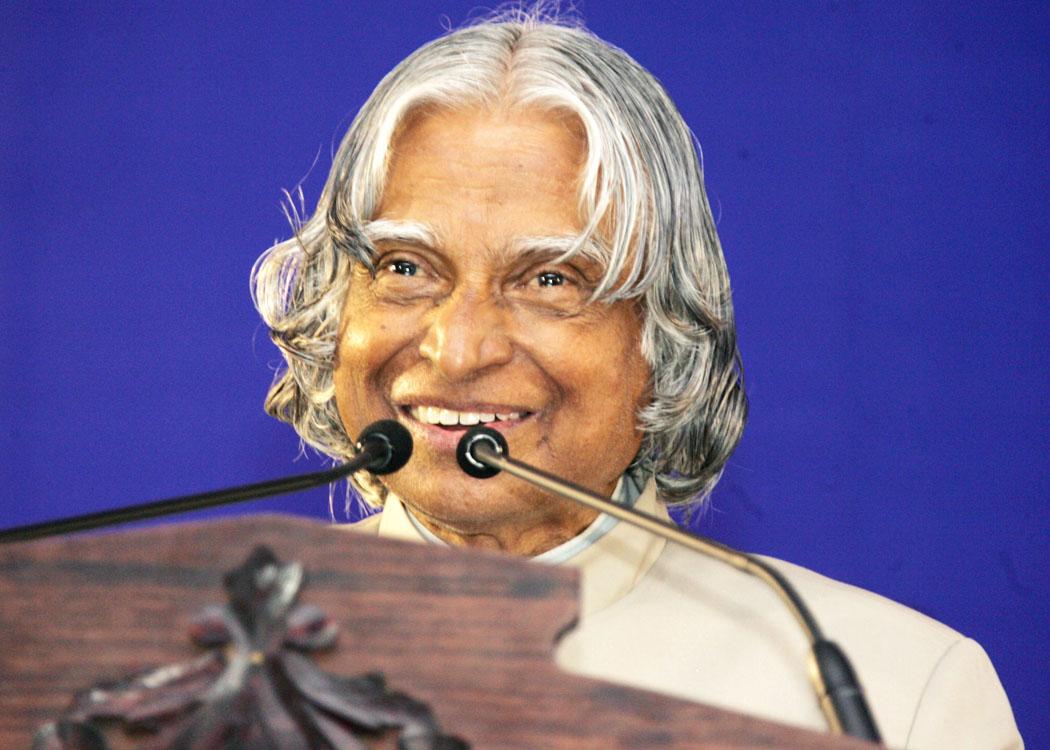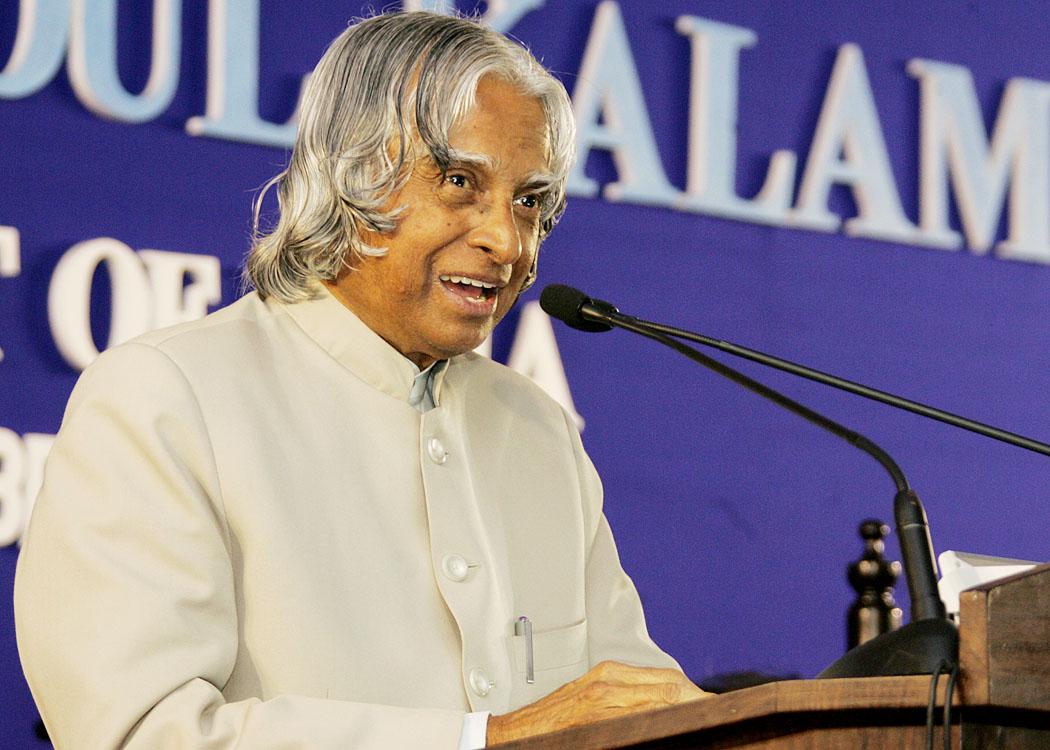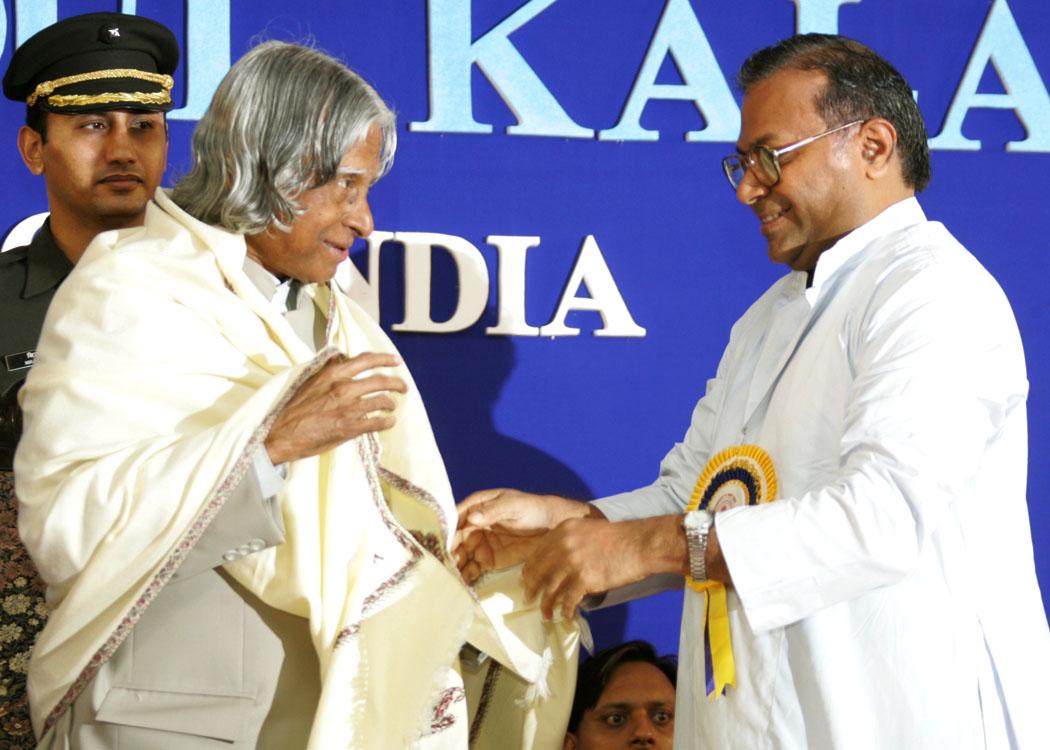Address And Interaction With The Students Of Loyola Institute Of Business Administration Loyola College, Chennai
Chennai : 01-12-2005
Evolving Entrepreneurs
I am indeed delighted to be in the Loyola College and interact with the students of Loyola Institute of Business Administration. I am happy to note that Loyola College is creating a pool of administrators and entrepreneurs with a spirit of creating small and medium enterprises in Tamil Nadu and other parts of the country. During the last 25 years the institute has generated large number of Business Administration graduates who have taken up important assignments in the industry. In the years to come, I am confident this institute will generate large number of entrepreneurs through their entrepreneurial development institute with an object of creating entrepreneurs and traveling with them in creation and sustenance of industries.
Contribution of Small Entrepreneurs
Friends, I have so far visited all the states and Union territories. Various children share with me what their goals are their aim and dreams. Ninety percent of their children tell me they want to become engineers, doctors, scientists, lawyers, administrators, judges and few of them say that they want to become politicians. Only in two states children say that they want to become entrepreneurs: in Gujarat and Maharastra. This indicates the industrial development and the aptitude of the children for taking entrepreneurship, there is a trend in the country for seeking government jobs, both either central or states. In this situation it is a good mission to transform as many youth as possible as young entrepreneurs. I am confident that the Loyola Institute of Business Administration will prove to be a significant departure from this situation as it would be working towards empowering the youth to become wealth creators.
Generation of Entrepreneurs through MBA Programme is the need of the hour. Moreover, many people have chosen entrepreneurial careers, because they seem to offer greater economic and psychological rewards than the large company route. Recent experiences indicate that the economic progress of few countries particularly the developed countries is due to the contribution of large number of small entrepreneurs employing less than 50 persons in their establishments. We need such entrepreneurs in large numbers in our country for developing and transforming our village clusters into sustainable economic units.
Development of Entrepreneurs
The key characteristics required in an entrepreneur are desire, drive, discipline and determination. I am confident that this institute will promote following important traits among the MBA students and the future entrepreneurs:
(a) Vision and pioneering spirit.
(b) Being able to see possibilities where others do not.
(c) Always searching for new opportunities and challenges
(d) Being creative - 'able to think out of the box'.
(e) Constantly striving to do things better
(f) Confident about taking risks
(g) Proactive and focused on the future
(h) A good knowledge and skill base.
Now I would like to discuss some of the important programme management tasks such as: Selection of Project Directors for a programme, organizational dynamics including review mechanism and importance of acknowledging the contributions of team members.
Selection of Project Directors for a programme
In June 1983 the Integrated Guided Missile Development Programme was about to be sanctioned. That was the time we had to select the Project Directors for Prithvi, Agni, Akash, Trishul and Nag. In DRDL, at that time many experienced Scientists in Development were competing candidates for this task. Many of them were over fifty. To enable the selection of the most suitable candidate for heading these projects we followed a novel procedure. I called for the meeting of the Management Council of DRDL and the agenda for the meeting was to finalise the criteria required for the selection of the Project Directors. I asked each member of the Management Council to go to the Board and write one characteristics, which he considered essential for the selected Project Director. The characteristics mentioned by the members for an effective Project Director were as follows:
a. should be a post-graduate or a doctorate in rocket technology or system engineering.
b. should have achieved excellence in any one of the technology in missile area or in management. c. should preferably be a good missile system designer.
d. should be a team person.
e. should be a good leader.
f. should be able to get along well with the team, and other agencies contributing to the programme.
g. should have minimum ten years of service left so that the Project Director can see that the missiles are developed and successfully led to production.
h. should be a person of unimpeachable integrity.
When we discussed all the characteristics together, there was convergence among members that the following are the most essential characteristics of the Project Directors: credibility of the person in achieving excellence in one of the technologies or management is the first essential quality. Secondly, Project Director should be young enough to design and develop the missile and lead it to production. Thirdly, the selected candidate should be a person of unimpeachable integrity. With these criteria Scientists of the age group below 40 became the obvious choice for becoming the Project Directors of the Programme. Simultaneously, I nominated the other experienced Senior Scientists as Technology Directors with the responsibility of developing the technologies required by the projects. This created a technological link between the Project and Technology Directors. Project Directors had the sanctioning power, which created a healthy relationship between the Project Directors and the Technology Directors.
As an anecdote to this, I would like to mention how we decided on the name of the projects. In a special meeting we invited all the Project Directors and Technology Directors to decide on the names. We put the criteria that the name should be indicative of the performance of the missile systems; it should be simple, there should be an Indian-ness about the name and should be familiar to every one. On this basis the names Agni, Prithvi, Trishul, Akash and Nag were chosen and today these names have become household names in many places. People at large, common man and even high school students are aware of these names and know what type of missiles these names indicate.
Organizational Dynamics
The unique feature of the Integrated Guided Missile Development Programme was that it included the funds required for limited series production of the missile systems. The programme, thus, had four different phases viz., the design phase, development of sub-system and systems, trial and evaluation including flight trials and productionisation of the systems. The laboratories executing the programme had to be appropriately organized for managing the load of the different phases of the programme. Realizing this feature initially in 1983, DRDL was reorganized to undertake the complex Integrated Missile Development Programme and execute the first phase viz. the design phase. The activity level was being continuously monitored to see the result of this reorganization. Initially, the activity index was around 40% which rose to nearly 60% during the period 1983-86. By this time, the laboratory has entered into the second phase, development of sub systems and systems and conduct of flight tests in some cases. Since, the activity index showed saturation characteristics and started slightly drooping, we had to carry out the second reorganization in 1986 to improve the activity index for that period. With this reorganization the activity index rose to nearly 70% by the year 1998 when flight test of Trishul, Prithvi and Agni were all carried out. Then there was again a tendency for the activity index curve to droop which led to the third reorganization in late 1989 while the programme entered the production phase and orders for two missiles systems had been placed on the production agency and Nag and Akash system were ready for flight tests. The message which I would like to convey is that the projects, the programme managers and the work centers must be sensitive to the organizational dynamics and organizational output of the different phases of the programme and plan reorganization well in advance so that the organization maximizes its output.
Review Mechanism: With the sanction of the missile programme in 1983, we had created an institutional mechanism of robust review of all stages of the projects. These reviews included preliminary design review, critical design review, sub-system review, system review, static test readiness review, flight test readiness review and post-flight analysis. The important feature of the review mechanism was the review experts were drawn from different specialization working in different laboratories and universities spread in different parts of the country. Any expert available in the field was sought by the project as a review member, which enabled them to get the collective wisdom of specialists on technical issues. Review recommendations were executed faithfully by the project team in a time bound manner. In addition to this, failure analysis board, waiver board were also created for undertaking the review and corrective action for certain classes of failure and authorizing waivers in marginal cases. The quality and reliability team was asked to work out a reliability model of the system under test and present it before flight test readiness review so that the flight test authorization board can take a considered view on the desirability of proceeding for the test in case the reliability margin is low. The reliability model was constantly updated based on the predicted reliability and the performance of the system during the flight test. I always found that the confidence of the scientists and the team became very high if the review was carried out objectively. Also hidden problems were invariably brought out during the review, which became a valuable input to the programme.
Importance of acknowledging the contribution made by the Team Members
I would like to recall an event, which took place in 1995. We were having the Light Combat Aircraft (LCA) roll out in the HAL Bangalore campus. To my surprise I found that the most important person who was the lifeline of the programme was sitting in the first row. I did not know why he was sitting there. At that stage during my welcome address I started describing about Dr. Kota Harinarayana�s contribution in the development of the LCA. I called him to the dais and gave my chair. Immediately they brought another chair for him for being seated in the dais. There was a big cheer from the crowd since all of them acknowledged the contribution of Dr. Kota Harinarayana for the programme.
At this stage I would like to describe my experience while working on the design project of the fourth stage Apogee motor. During Dr. Sarabhai�s time, Dr. Muthunayagam was the Design Project Leader for the third stage. Dr. M.R. Kurup was the Design Project Leader for the second stage. Dr. Gawarikar was the Design Project Leader for the first stage. Dr. Gupta was the Design Project Leader for the guidance system. Prof U.R. Rao was the Design Project Leader for the Rohini satellite. I was the Design Project Leader for the fourth stage and the heat shield. Dr. Vikram Sarabhai carried out the review. He normally invites for such reviews experts from academic institutions since it was a design phase. For this review he had invited Prof I.G. Sharma, a well-known Guidance and Control System and Simulation Expert, Prof Narashima aerodynamic design and atmospheric sciences, Prof Mahapatra, radar system and Prof K.A.V. Pandalai, aerospace structure. Every project leader gave a presentation on the progress and problems relating to their task. Finally when my turn came, I gave a three-minute presentation on the overall status of the project. Later, I asked Shri Sudhakar, System Designer, Shri Sathya, Composite Products Engineer, Shri Abdul Masjid, aerospace mechanism Engineer and Shri Namboodri, Rocket Motor Designer to give short presentation on the progress of sub-system design. When my team completed the presentation, discussion time came. Many technical and managerial questions were asked. I answered. At that stage there was a question from an experienced scientist. Mr. Kalam, I saw the presentation from your Team one after the other. What you have done? How to answer this question? I was framing the answer. Dr. Vikram Sarabhai said Mr. so and so what Kalam did is indeed project management. That is how I would like to hear from the people who have actually carried out the task. Friends, project management demands that the project team must be able to get things done from different people and different institutions. People who contribute to the project should know that they are very important for the project, and they are remembered. Now I would like to discuss about Law of development and competitiveness.
Law of development
How to become competitive? I was studying the development patterns and the dynamics of connectivity between nations, especially in trade and business. As you all know, the world has a few developed countries and many developing countries. What is the dynamics between them and what connects them? Developed country has to market their products in a competitive way to different countries to remain as developed country. The developing country to get transformed into developed country; they too have to market their products in other countries in a competitive way. Competitiveness is the common factor for both. Competitiveness has three dimensions: quality of the product, cost effectiveness and supply in time. Indeed this dynamics of competitiveness in marketing of products by developing and developed countries determines the law of development. We have to see the enterprises with the competitiveness index in mind.
Total Quality Management
I have participated in many space and defence programmes. Putting a satellite in the orbit needs a large rocket system. Rocket system and the satellite put together will have at least 50 sub-systems and more than 80 thousand components mechanical, electrical and chemical. To put a satellite in the orbit all the systems have to work to full performance requirements. Even one sub-system or one component fails mission will be a failure. The spacecraft, which has been launched, has to work in space for over 10 years with out any failure. It is also true with launching of missile systems. It has to reach the required target by flying thousands of kilometers. The message I would like to convey here is that those in the programme have to learn quality of a product has to be built in during the design phase and carried forward till the test phase. It has to be constantly improved. The man who designs and manufacturers must love what he does. MBA Graduates have to aim for total quality management that is quality design to production, testing leading to market. So this will ensure success of the product and system. I am sure that the Loyola Institute of Business Administration will impart this lesson with real life experiences so that the graduates succeed in their mission from the beginning.
Collective Wisdom
Recently, I read a book in which a methodology is described how a management is able to retrieve a lost sub-marine. When a meeting of four experts was called certain suggestions were made. When the search was made using these suggestions no positive result was found. Then the top management decided to call a meeting of all the 40 people from multiple disciplines for working out a comprehensive search process. All the 40 members were asked to give one mutually exclusive suggestion for progressing towards the search. The resultant 40 suggestions gave five alternatives. Based on this five alternatives parallel teams were deployed to carry out the search process. This finally lead to the detection of the missing submarine. This type of problem solving technique is being followed in our Indian institutions like ISRO and DRDO, where the programme review meetings are attended by specialists in multi-disciplines leading to precise determination of problem area and finding satisfactory solutions. The message for MBA students is that they have to keep eyes and ears open and try to seek guidance from all possible areas for solving organizational problems.
Rural Development Enterprise
Total number of villages in Tamil Nadu are around 16,000 with a population of about 4 crores. Development of these rural areas will need creation of 350 cluster of villages having an average population of one lakh. They could be achieved through Provision of Urban Amenities in Rural Areas (PURA) for these clusters. It involves identification of clusters with growth potential and creating Physical Connectivity, Electronic Connectivity, Knowledge Connectivity and thereby Market Connectivity. I am sure many of the graduates who graduate from this institute will create enterprises in many PURA complexes in Tamil Nadu and improve the lifestyle of our village community and be an active partner in the Developed India Mission.
Conclusion: Leadership Challenges
Generation of creative leaders is a big challenge. It happened in the society at difficult times or in a prosperous time. The creative leadership can be defined as follows:
Creative leaders are those whose leadership styles move from commander to coach, manager to mentor, from director to delegator and from one who demands respect to one who facilitate self-respect.
I am confident that the young graduates of this Institute will certainly imbibe the quality of creative leaders, and be the partners for shaping Tamil Nadu.
My best wishes to the young graduates, Faculty Members for success in their mission of becoming job providers to the society.
May God bless you.
LIBA STUDENT'S QUESTIONS TO HIS EXCELLENCY, THE PRESIDENT OF INDIA
Minto Alex C., I Year PGDBM (Full-Time)
1. In the present corporate world scenario where profit has become the only motive due to increased competition, what can be done by us as future managers for the upliftment of the backward sections of society?
Ans. Industry has to be competitive and should be economically sound. The upliftment of the backward sections of the society should come from training the people for quality job and creation of enterprises for providing them job. Educating the poor and giving them employable skills is the real way of uplifting the society.
Sandeep Chandel, I Year PGDBM (Full-Time)
2. Science and engineering are the two hands which will work to realize our dream of seeing India as a developed society. What is a role of a manager in this situation? Role of manager in your vision 2020?
Ans.Using the right type of science and engineering for a particular problem in the industry is the job of the manager. Science and Technology is the instrument of non-linear growth for the industry. If the managers, develop a scientific temper and make selective use of science and technology, they will always win.
Debasmita Ghosh, (One Year) Executive P.G. Diploma in Marketing Mgt.,
3. I work in an advertising setup and in my course of work I have come to realize that even today corporate India is still heavily partial towards men, though there is no dearth of competent women-professionals. They still have to prove themselves twice over before getting a meaty profile. How can this change? Can the government play any role to change this unfair equation?
Ans. In organizations there is a need to emphasize that there is no difference in performance between men and women. Also, some correction of perception can be achieved through gender sensitive training in organizations. The top management should emphasize that capability of women should never be underestimated. Above all, if more number of women join the organizations this perception will totally change.
Deepa.K.P.,PGDBM
4. Nanotechnology is deemed to be the next frame-shattering industrial revolution. It is expected to change the way we produce, distribute and consume many goods resulting in enormous changes in the labour composition rendering many jobs useless and leading to a tremendous social upheaval. What do you think will be the role of academic institutions, especially management institutions, to help tackle this?
Ans. Technology always brings in obsolescence. We should not be afraid of change. Academic institutions should prepare the management for the change. Management in turn should prepare the workforce for change through proper training and redeployment. I am reminded of my days in DRDL in 1982. At that time, I used to see large number of drafting boards in the drawing office. With the introduction of computers and computer aided design and manufacturing by 1990 all the drafting boards vanished. All the draughtsman were trained on the computers and they had no difficulty in changing their working method. In fact, they started enjoying the use of computers.
M.J. Sivasachithanandam, I Year PGDBM
5. What is your advice to youngsters of non-technical background who have only the skills of management as the core strength in their pursuit of entrepreneurship"?
Ans. Young entrepreneurs should hire the right technical people for technical advice pertaining to their enterprises. They should be receptive to the happening around them and learn how to use technologies for the benefit of the enterprise. For evaluating between technologies they can use brainstorming session as a means. This will give multiple view about a particular technology through which the entrepreneur can make the right decision. We must understand that human beings are good difference detectors though they may not be very good absolute value detectors. This philosophy must be used by the youngsters having only skills in management.
Ganesh, I Year PGDBM
6. What is the role of spiritual quotient in technical and management education?
Ans. Spiritual quotient brings in humility and balance which is very essential for running successful institutions. Also, spiritual quotient will make the student righteous and ethical. These features are necessary for long term sustained growth of institutions.
Jeyaraj, II Year PGDBM (Full-Time)
7. What are the values that you cherish most? How did your stay in St. Joseph's College, Tiruchi contribute to your value system?
Ans. Righteousness, hard work, perseverance and forgiveness.
While I was in college, I remember the lectures given by highest authority of the Jesuit institution Rev Father Rector Kalathil of St. Joshep?s college, Trichirappalli, Tamilnadu. Every week on Monday, he will take class for an hour. He used to talk about good human beings, present and past, and what makes a good human being. In this class he used to give lectures on personalities such as Buddha, Confucius, St. Augustine, Califa Omar, Mahatma Gandhi, Einstein, Abraham Lincoln including some scientific personalities and moral stories linked to our civilizational heritage. He also used to talk about great personalities living in the father's lodge and who had made contribution with values in the service of the people. This gave me insight into spirituality.

